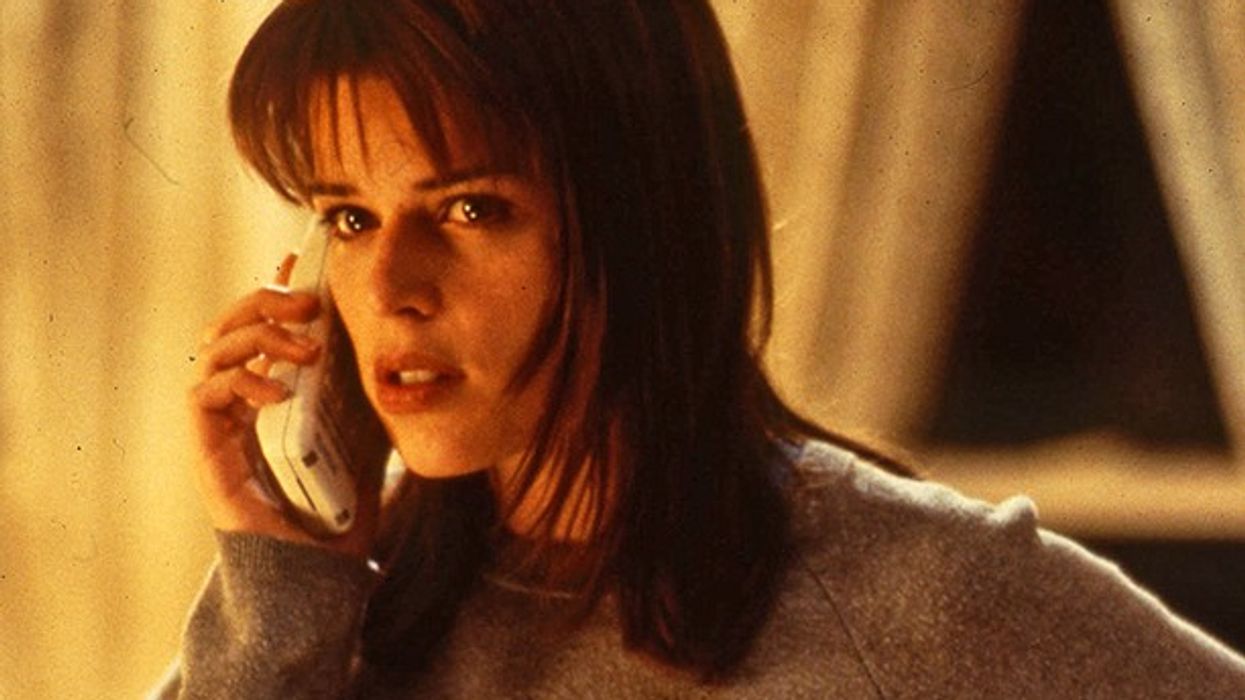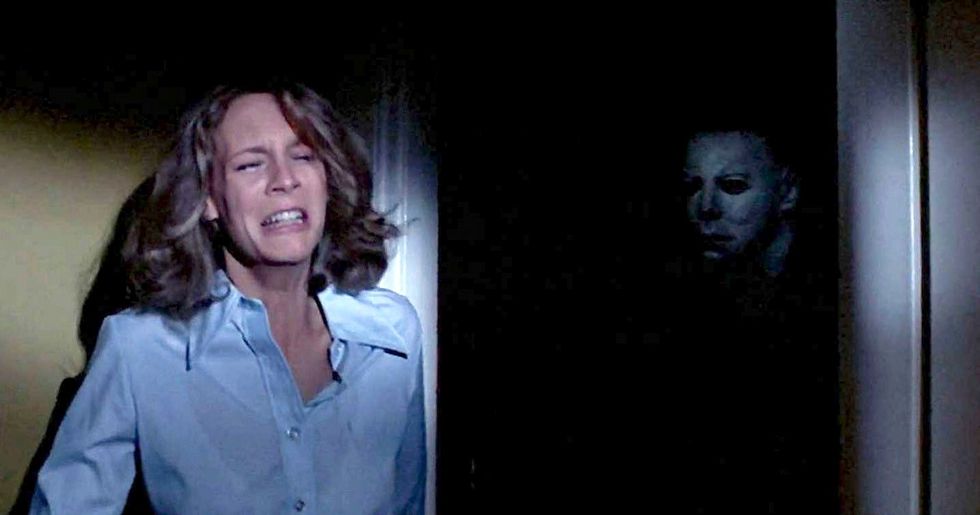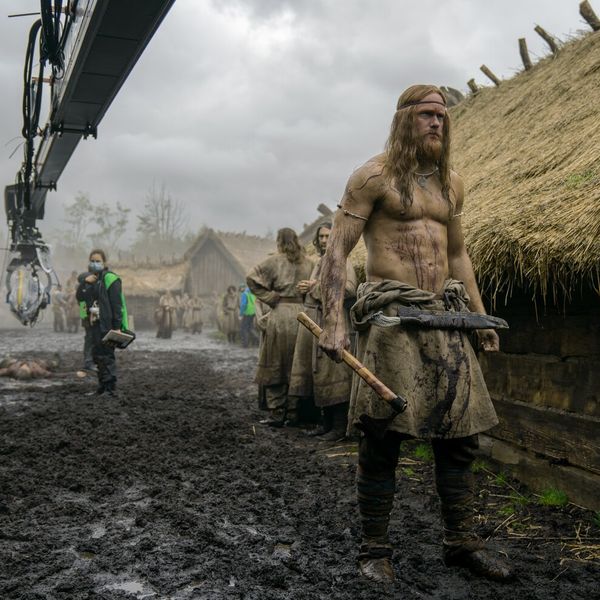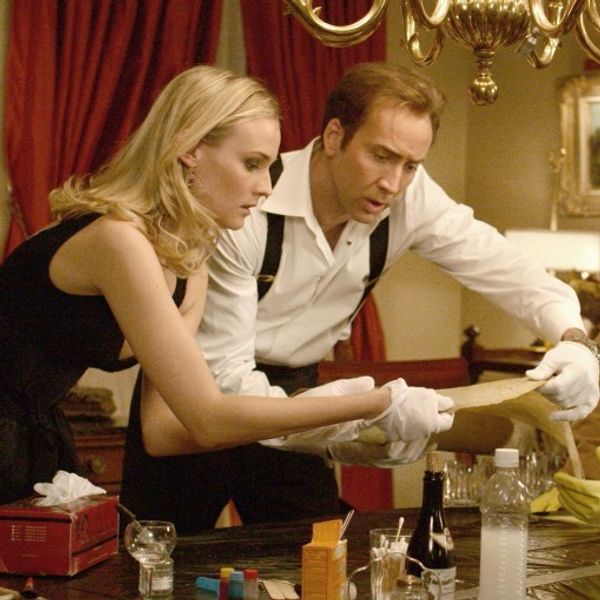A Deep Examination of the Final Girl Trope
Calling all Sidney Precotts... we need you!

'Scream'
I love slasher movies. I think they're so much fun. they have all the trappings of an Agatha Christie murder-mystery and all the excitement of an action movie. These kinds of films have certain beats that seem to be followed every time.
And the most prominent one is that of the final girl trope.
Today I wanted to look at how she functions within these movies as well as break down where she came from and where we think she's going.
So, if you'll indulge me, let's get into a topic I really enjoy writing about and have some fun.
A Deep Examination of the Final Girl Trope
I like digging deep into the kinds of characters we put into our stories. There's a lot we need to take into account about how these generic tropes happen, like who are they for, why we keep using them, and different ways we can make them feel fresh.
First up, we should talk about the definition of the final girl.
What is the definition of "final girl"?
 'The Blair Witch Project'Credit: Artisan Entertainment
'The Blair Witch Project'Credit: Artisan EntertainmentA final girl is a heroine left at the end of a horror movie. She's the one who defeats the bad guy, or escapes, and is left standing (usually) at the very end. It's the final girl and not the final guy because, at the end of these movies, it's almost exclusively women.
When it comes to older movies (and TV shows) this woman is usually a virgin. She is more intelligent than other victims and her character arc usually involves overcoming a personal problem or some sort of inadequacy that is exacerbated by the situation.
The History of the Final Girl

'The Witch'
A24
Film theorist Carol J. Clover was the first person to coin the term "final girl."
In her book Men, Women and Chain Saws, Clover says, “She is the one who encounters the mutilated bodies of her friends and perceives the full extent of the preceding horror and her own peril; who is cornered, wounded; whom we see scream, stagger, fall, rise, and scream again. She is abject terror personified.”
The book was written in 1992, but we've had final girls since the dawn of the slasher.
Think about Marion Crane's sister in Psycho or Laurie in Halloween.
Digging Deeper into the Final Girl Trope
 'Halloween'Credit: Compass International Pictures
'Halloween'Credit: Compass International PicturesFor many, the final girl is the living embodiment of stereotypical conservative attitudes of what women "should be"—virginal, subservient, untouched by the menace of the outside world. But as the trope evolved, some feminists noticed that through this device, the males in the audience are forced to identify with a woman in the climax of the movie.
That became a very powerful sword to wield.
It allowed new points of view in storytelling. When women won, they were able to force men to watch them step into their own power.
Of course, this is really a movie-by-movie scenario.
So let's check out some examples!
Final Girl Examples in Movies and TV

'The Final Girls'
Stage 6
Whether it's Ripley from the Alien franchise or Laurie from Halloween, final girls are all over cinema. In the renaissance of slashers, we were treated to Sidney Prescott from Scream, and now we have Tree Gelbman from the Happy Death Day movies.
The first one we know is probably Mari Collingwood from The Last House on the Left or maybe even Jess Bradford from Black Christmas.
The 80s has Ginny from the Friday the 13th series and Nancy from A Nightmare on Elm Street.
The "Final Girl" is a trope commonly found in horror and thriller genres, referring to the last woman alive to confront the killer, ostensibly the one left to tell the story.
This character is often portrayed as morally virtuous, intelligent, and resourceful, qualities that help her survive the ordeal.
Here are some classic and contemporary examples of Final Girls in movies and TV:
Movies
- Laurie Strode (Jamie Lee Curtis) in Halloween (1978) - One of the most iconic Final Girls, Laurie survives the attacks of Michael Myers and sets the standard for future Final Girls with her combination of vulnerability and resilience.
- Sally Hardesty (Marilyn Burns) in The Texas Chain Saw Massacre (1974) - As one of the earliest examples, Sally endures a night of terror and manages to escape the clutches of Leatherface and his family.
- Sidney Prescott (Neve Campbell) in the Scream series (1996-present) - Sidney is a modern evolution of the Final Girl trope, who not only survives multiple encounters with Ghostface killers but also reflects on the rules of horror movies.
- Ellen Ripley (Sigourney Weaver) in Alien (1979) - Ripley is a groundbreaking Final Girl in science fiction, demonstrating intelligence and physical prowess in her fight against the alien.
- Nancy Thompson (Heather Langenkamp) in A Nightmare on Elm Street (1984) - Nancy uses her wit to battle Freddy Krueger, turning her nightmares into a ground for confrontation.
TV Shows
- Buffy Summers (Sarah Michelle Gellar) in Buffy the Vampire Slayer (1997-2003) - Buffy redefines the trope by being a Final Girl who actively hunts vampires and demons, equipped with supernatural strength and a sharp wit.
- Jessica Jones (Krysten Ritter) in Jessica Jones (2015-2019) - As a private detective with superhuman abilities, Jessica faces her past trauma and battles the mind-controlling Kilgrave.
- Sydney Bristow (Jennifer Garner) in Alias (2001-2006) - Sydney is a skilled spy who faces off against various adversaries while uncovering secrets about her own identity and past.
- Clarke Griffin (Eliza Taylor) in The 100 (2014-2020) - Clarke is a resilient leader who fights to protect her people in a post-apocalyptic world, constantly facing moral dilemmas and physical threats.
These examples demonstrate the evolution of the Final Girl trope from its origins in horror to its application in various genres, showcasing characters who are not only survivors but complex individuals with depth and agency.
How Did The Final Girl Become a Trope?
Horror movie tropes are some of the most fun to write because you can subvert them so easily.
The final girl is no different. She became a trope as more and more slasher films were made. Many of them tried to emulate the ones that had success, like when Texas Chainsaw Massacre had a girl triumphant at the end.
They also were written and directed by men... and the portrayals of women were not as "woke" as we like them today.
Many times, these final girls were non-sexual beings who served as a foil to a friend they made very promiscuous.
The girls who had sex died. The virgins got to live.
In an essay on this character, Grace Pullman writes, "But what makes a Final Girl, really? She’s virtuous. She abstains from drinking, from drugs, and from premarital sex. Final Girl is modest. She’s pretty but unaware of it. Demure. She plays fair. A good girl. This is why she lives while her more promiscuous peers die. Final Girl is the gold standard, the role model for the impressionable female viewer."
So we need to ask...
Is the Final Girl Trope Rooted in Misogyny?

'The Texas Chainsaw Massacre'
Criterion
This is a loaded question. I think it's safe to say that the trope began within misogynistic tendencies. Back in the 70s (and through today!), the male-dominated film industry was absolutely afraid of the women’s liberation movement.
That might be why, whether overtly or even subtly, the women who expressed sexuality or sometimes anything other than homemaker tendencies were viciously killed in these movies.
As Grace Pullman continues in her essay, "Feeling threatened, horror giants in Hollywood began killing and torturing fictional facsimiles of the liberated woman, depicting her as amoral, inferior, and vapid. They punished her with a painful, sensational death, playing out these scenarios over and over again on the silver screen. Then they created the idealized prototype of the Final Girl and rewarded her obedience, her purity, by sparing her life. As if to say to the women in the audience, 'This is your only hope for survival.' As if to say, this is how you must behave or you’ll die. We’ll kill you."
These are powerful words, but much like the final girl, the trope does not end here.
The Future of the Slasher Film Heroine

'Us'
Universal
We're entering a whole new world when it comes to these characters. The final girls we knew are no longer. And some of the ones we've met are different. Take a look at Laurie and 2018's Halloween sequel.
Jamie Lee Curtis broke onto the scene as the character in the 70s, but reprising the role now, she's no longer the babysitter who is a virgin. Now she's a grizzled grandma who is proactive in her attacks and totes a shotgun.
And it's not just her. Recent horror films such as The Witch, It Follows,Raw, A Quiet Place, Hereditary, and Midsommar have thrilled both audiences and critics. They also made good money at the box office. And the women in them don't just kick-ass but provide a much deeper character development than we've seen from previous characters.
They are loving mothers, students trying to overcome trauma, daughters who want to understand their family, and teens escaping venereal disease.
The point is, creative writers and directors have taken what used to be a worn-out character and breathed new life into her.
Summing up the final girl trope
At the end of the day, all this film theory is really just a way to get you to tell the best stories. I want to challenge you to let go of your preconceived notions, the ones about the kinds of stories you're used to seeing or characters you're used to writing, and lean in.
I hope this was helpful in your process and with your understanding of film and television.
If you have ideas or want to chat, let me know in the comments.











